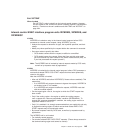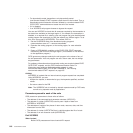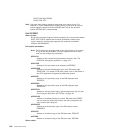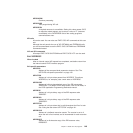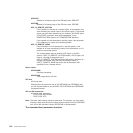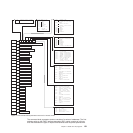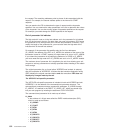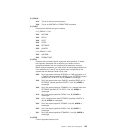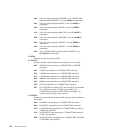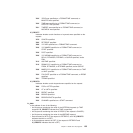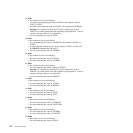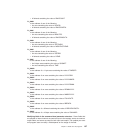the request. The remaining addresses point to pieces of data associated with the
request. For example, the second address points to the interval for START
requests.
You can examine the EID to determine the type of request and the keywords
specified. You can examine the other parameters in the list to determine the values
of the keywords. You can also modify values of keywords specified on the request.
For example, you could change the SYSID specified in the request.
End of parameter list indicator
The high-order bit is set on in the last address set in the parameter list to indicate
that it is the last one in the list. On return from your user exit program, CICS scans
the parameter list for the high-order bit to find the last parameter. Therefore, if you
modify the length of the parameter list, you must also reset the high-order bit to
indicate which is the new last address.
For example, if the parameter list specifies only the first four addresses
(IC_ADDR0, the address of the EID, to IC_ADDR3, the address of the name of the
transaction named in a START request), the high-order bit is set on in IPC_ADDR3.
If you extend the parameter list by setting the address of a SYSID in IC_ADDR7,
you must unset the high-order bit in IC_ADDR3 and set it on in IC_ADDR7 instead.
The maximum size of parameter list is supplied to the exit, thus allowing your exit
program to add any parameters not already specified without needing to first obtain
more storage.
The original parameter list, as it was before XICEREQ was invoked, is restored
after the completion of XICEREQC. It follows that the execution diagnostic facility
(EDF) displays the original command before and after execution: EDF does not
display any changes made by the exit.
The UEPCLPS exit-specific parameter:
The UEPCLPS exit-specific parameter is included in both exit XICEREQ and exit
XICEREQC. It is the address of the command-level parameter structure. The
command-level parameter structure contains 26 addresses, IC_ADDR0 through
IC_ADDR1F. It is defined in the DSECT IC_ADDR_LIST, which you should copy
into your exit program by including the statement COPY DFHICUED.
The command-level parameter list is made up as follows:
IC_ADDR0
is the address of a 9-byte area called the EXEC interface descriptor (EID),
which is made up as follows:
v IC_GROUP
v IC_FUNCT
v IC_BITS1
v IC_BITS2
v IC_BITS3
v IC_EIDOPT5
v IC_EIDOPT6
v IC_EIDOPT7
v IC_EIDOPT8
152 Customization Guide




